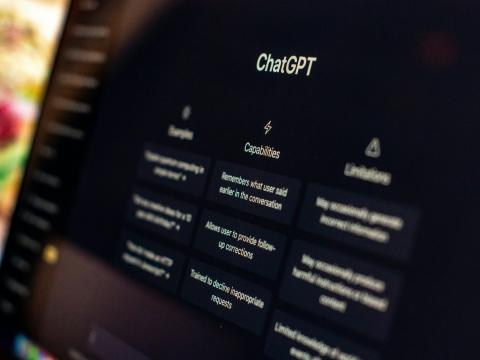Ohio wants schools to embrace AI. That means a learning curve for teachers

Listen to this Episode
ChatGPT has changed the classroom. The artificial intelligence program can write essays analyzing Shakespearean plays, solve complex math problems and create images.
And while many teachers are worried about what this might mean for plagiarism and data privacy, Ohio isn’t shying away from the technology. InnovateOhio, led by Lieutenant Governor John Husted, recently released a tool kit with recommendations for students, parents and educators on how to ethically integrate the tool.
Ohio is one of 13 states that have developed, or are in the process of developing, guidance on the emerging technology’s use in education.
“This tool kit is a resource for those who will prepare our students for success in an AI world,” Husted said in a press release. “It continues our work to ensure Ohio is a leader in responding to the challenges and opportunities made possible by artificial intelligence.”
The guidebook has a template for superintendents on how to communicate with parents about the use of AI, advice for teachers on how to detect students using the tool to cheat and an “AI 101” course for parents.
Up and running
The technology has already taken hold at some school districts, like Chagrin Falls Exempted Village Schools in northeast Ohio. Molly Klodor, the district’s instructional technology coach, has been assisting her school district in finding ways to benefit from AI.
She said students are able to learn differently with AI. For example, in one school project, middle schoolers learned about tree life cycles by asking questions to a chatbot that was playing the role of a forest.
“Instead of learning from it from a textbook that might be a bit more dry, they were able to interact with this [computer-generated] forest,” Klodor said.
Plus, she said it’s easy for students to personalize their experience to meet their needs. If they’re struggling to understand the AI’s output, the student can ask the program to explain the subject at a lower reading level.

And it’s not just a tool for students. She said teachers have been using the technology to craft curriculum. It can help educators think of multiple choice questions for a test or help create the first draft of a syllabus.
“Our teachers are saving lots and lots of time with some of the more menial tasks that they might have done before, like making a second version of a quiz,” she said.
A starting point
Chagrin said the guide is a good step in helping teachers who may be unsure of where to begin with AI – especially those who may have concerns about how flawed the technology can be.
The tool kit emphasizes that while AI can be useful in shaping curriculum, it’s important that a “human touch” be kept in the classroom. Klodor seconds that. She said everything AI-generated should be fact-checked and edited before putting it into use.
In many instances, she said AI really is just a good way to brainstorm ideas and get the creative juices flowing.
“We're talking about using it as one tool in [students] multifaceted toolkit to learn,” Klodor said. “So you're still going to be needing to be the critical thinker or the human in the machine.”
Klodor said, at Chagrin Falls, a lot of time and effort went into training teachers and getting them on board. Klodor hopes that the tool kit can be used in conjunction with teacher input to expand AI’s use across the state.
“By forming a committee or talking to your teachers and getting their input into how artificial intelligence might look in their space, you have a better overall product,” Klodor said.
9(MDYwODMwNTczMDE2ODk5NTExNDAyNzM5Ng000))
- Home
- Schedules
- TV
- TV
- Local TV Programs
- Business | Life 360 with Kristi K.
- Toledo Stories
- To The Point with Doni Miller
- Listening with Keith Burris
- Ideas & Insights
- WGTE Presents
- BL360: Northwest Ohio Innovation Consortium
- Magic of the Old West End
- Freedom Means Never Surrender
- I&I: The Random Factor
- FF: National Cherry Festival
- TTP: Moms Demand Action For Gun Sense in America
- Watch Live
- Radio
- Education
- Community
- Support
- About
- Donate
- Watch Live


